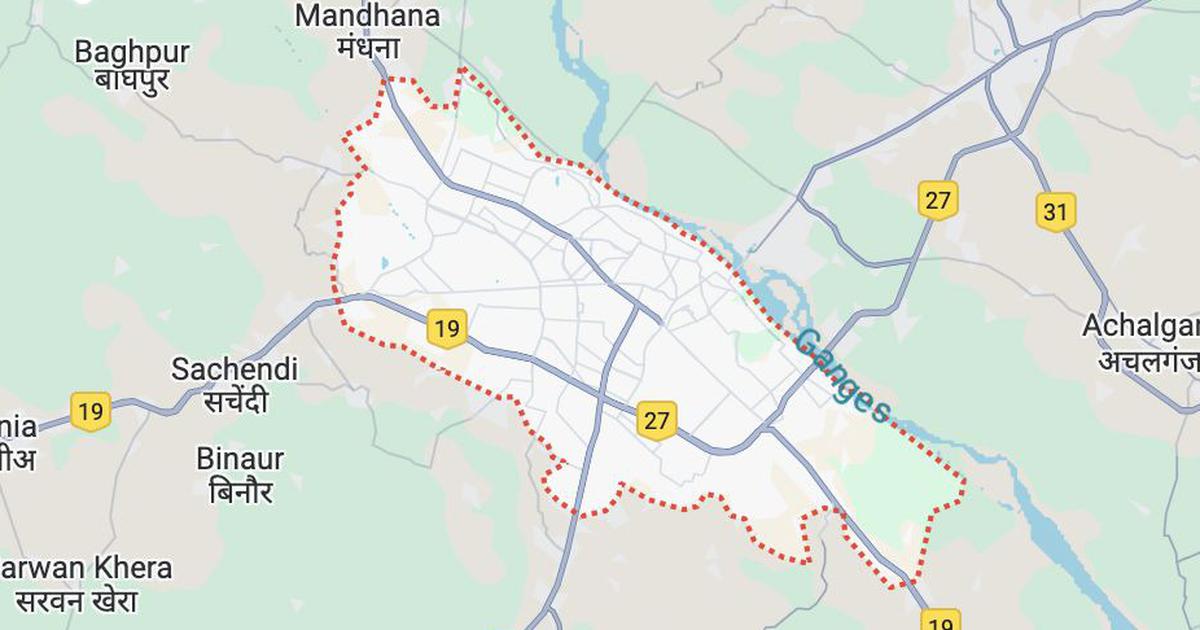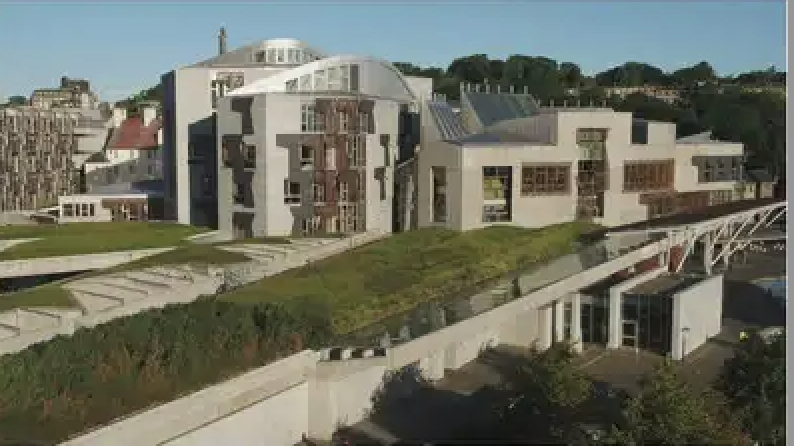
By Tarushi Aswani / The Wire
Mahemdabad (Gujarat): Dinesh, a newcomer in Mahemdabad, slowly paces towards the shrine at the Roza Rozi Dargah, his forehead glistening with sweat. When he arrives, he takes his shoes off and wipes his hands on his trousers before folding them in obeisance and walking towards the grave of Mubarak Sayyid, a minister who had served Sultan Mahmud Begada in the 15th century. There, Dinesh bows down, rests his head on the edge of the grave, and prays.
“I have recently shifted to Mahemdabad from Gada village,” said Dinesh. “The locals told me that this place is sacred, so I came here with faith, with sincerity, to pray for good fortune, the way I prayed at the Siddhivinayak Temple in Mahemdabad.”
That Dinesh is a Hindu is not a surprise to anyone associated with the dargah. People of all faiths are welcome here and have been welcome for centuries. “So what if I’m a Hindu. This dargah is for everyone,” said Jashoda, a resident of the Hindu-majority village of Sojali, who visits the dargah whenever she feels choked with problems. “Sometimes, in fact, you see more Hindus than Muslims here.”
The Roza Rozi Dargah, an Archaeological Survey of India (ASI) site located at Sojali village near the Vatrak river, about five kilometres from Mahemdabad town and 47 km from Ahmedabad, is a glowing symbol of India’s syncretism. Unfortunately, it is well on its way to becoming a structure as disputed as the Babri Masjid was in Ayodhya, thanks to recent attempts by Hindu groups to claim it as a temple. It is also not the only such symbol of syncretism in Gujarat to be threatened in this way.

The green arched gate marks the entrance to the grave of Hazrat Mubarak Sayyid. Photo: Tarushi Aswani
‘Reclaiming’ a temple
During the Navratri festival in 2021, on October 13, the day of Maha Ashtami, a group of Hindus entered the Roza Rozi Dargah, claiming that it had originally been a Hindu temple.
The group placed a picture of a Hindu deity inside the dargah and worshipped it as loud music played in the background. They also sprinkled sindoor inside the shrine and on the dargah’s outer structure, lit a diya and performed Hindu prayers.
All these activities of vandalism were captured in a video and circulated widely on social media, outraging the local Muslims, who make up a minute population in Sojali village.
Shocked by the ambush, Sultan Shah, the custodian of the dargah, called for the help of the police who arrived swiftly and remain on guard at the dargah to this day. Muslim leaders such as Shamshad Pathan took up the issue and submitted a memorandum to Arpita Patel, the superintendent of police in Kheda, to take action against the vandalism, after which the police took cognisance of the matter. The following day, the police removed the picture of the Hindu deity from the dargah and ensured that the dargah was rid of the sindoor and the diya.

The temple complex, created in 2014, sits right behind the Dargah complex. Photo: By arrangement
The genesis of the Hindus’ argument lies in a stone mound that emerged during Navratri 2014 from beneath the surface of the area behind the dargah’s compound due to soil erosion caused by the Vatrak river changing its course.
For many Hindus, this stone mound was a Hindu idol that had risen supernaturally at the site behind the dargah. In accordance with this belief, the mound was decorated and smeared with sindoor.
“This dargah is always open to people from all faiths,” said Sultan Shah, the seventh-generation custodian or diwan of the Roza Rozi Dargah. “The mausoleum has the peepal leaf design that stands for syncretism and inclusiveness across Gujarat. But this imposition of idol worship is an extremely incendiary action for Muslims to tolerate.”
Attack on syncretism
Shah told The Wire that between the ASI and the police, he was sure that the Roza Rozi Dargah would remain protected. He also argued that the propaganda spread by right-wing Hindu groups is merely a business model of politics. But less than a month ago, on March 22, the Imamshahi Sadat Committee was forced to write to the president and prime minister of India and the chief minister of Gujarat to tell them that the 14th-century dargah of the Sufi saint Imam Shah Bawa was being “converted into a Hindu temple” by groups of Hindus placing idols of Hindu gods in its premises.
In this letter, the committee said that it had written 18 times to the district collector of Ahmedabad and the sub-divisional magistrate in Daskroi about its concerns that the dargah was in danger of being converted into a Hindu temple and that having received no response from these authorities, the committee had had to escalate its apprehensions due to the hostility around them.

Graves of Hazrat Mubarak Sayyid’s family members are situated in the outer area of Sayyid’s grave. Photo: Tarushi Aswani
Interestingly, this shrine was where the Rashtriya Swayamsevak Sangh, the right-wing Hindu organisation, had held its annual Akhil Bharatiya Pratinidhi Sabha meeting in early March. Right-wing Hindu organisations call the shrine ‘Prerna Tirth’ or ‘Samadhi Sthal’ and refer to Imam Shah Bawa as ‘Imam Shah Maharaj’. The shrine is located in Pirana village, 25 km from Ahmedabad. Custodians of the Pirana shrine maintain that the shrine has always welcomed people of all faiths, but the attempt to overturn its syncretic nature and convert it into a Hindu temple is a blatant attempt to fan communal tension.
In 2019, right-wing Hindu elements began to spread the fake narrative that Dholka’s Tanka Masjid, which dates back to 1361, had earlier been a temple. By August that year, this propaganda had spread to such an extent that right-wing groups attempted to vandalise the mosque on August 29 and 30. Though timely intervention by civil society groups and police provided protection to the site, the historical monument was also targeted through a Twitter account under the name of “Reclaim Temples”, which claimed that the Tanka Masjid of Dholka was a Hindu temple. Meanwhile, the Vishwa Hindu Parishad claimed that the site had earlier been Bhima’s kitchen and the Pandavas’ school.
Communal cauldron?
Shamshad Pathan, general secretary of the All India Majlis-e-Ittehadul Muslimeen, Gujarat, believes that right-wing forces are trying to the best of their abilities to fan communal tension across the state, even amplifying mundane happenings in small towns and villages to achieve their ends.
“There are numerous small villages across Gujarat where Hindutva forces are flushing out Muslims using any means possible,” Pathan told The Wire.
Pathan has visited many such sites over the years and believes that the right-wing Hindu groups are undertaking strategic targeting to isolate and push Muslims to migrate out of certain areas of Gujarat.
Hozefa Ujjaini, a social activist, believes that incidents like those that took place at the Roza Rozi Dargah, the Tanka Masjid and the Pirana shrine are part of a “systematic attempt to demolish places that espouse composite culture” so as to attack secular democracy and fuel hatred among communities.
In a village like Sojali, where 1,400 Hindu families live in peace with five Muslim families, the forceful installation of a picture of a Hindu deity increased the vulnerability of the local Muslims.
This March marked the 20th anniversary of the 2002 Gujarat riots. As thousands of the victims of these riots continued to live with the injustices meted out to them, the Bajrang Dal conducted its biggest enrolment drive of the past two decades in the state. Nearly 2,600 youth men were given the ‘Trishul Diksha’ at a ceremony in Himmatnagar in Sabarkantha district.
Only seven months are left for the Vidhan Sabha polls and the right-wing organisations and their affiliates are stepping up their drive to polarise Hindus in a Gujarat where attempts are being made to shatter the age-old culture of syncretism and divide religious communities even further.
This article first appeared on thewire.in






